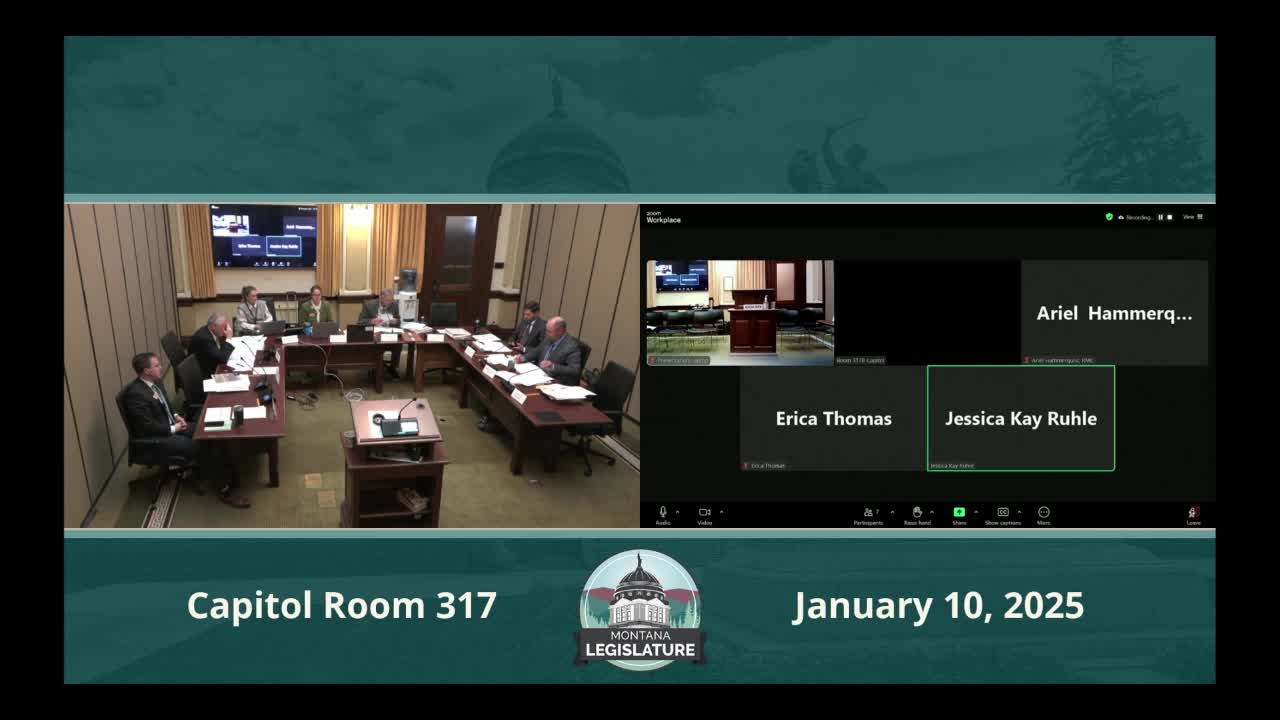Yam Museum reports 300% visitor increase after launching free admission initiative
January 10, 2025 | 2025 Legislature MT, Montana
This article was created by AI summarizing key points discussed. AI makes mistakes, so for full details and context, please refer to the video of the full meeting. Please report any errors so we can fix them. Report an error »

In a vibrant meeting room filled with the hum of anticipation, the director of the Yam Contemporary Art Museum passionately outlined the institution's vital role in the community during the Joint Subcommittee on Long-Range Planning meeting on January 10, 2025. The discussion highlighted the museum's commitment to accessibility and education, emphasizing its impact on over 8,500 students through various programs last year alone.
Located in downtown Billings, the Yam not only serves as a cultural hub but also as an economic engine for the city and Yellowstone County. The museum welcomed more than 17,000 visitors in the past year, drawing both locals and travelers, which in turn supports nearby businesses like coffee shops and restaurants. This interconnectedness illustrates how the museum contributes to the cultural vibrancy of the region, fostering a network that helps retain employees in Eastern Montana.
A significant point raised was the museum's recent initiative to offer free admission to all visitors, a move that resulted in a staggering 300% increase in attendance within the first six months. Families, in particular, made up the largest segment of this growth, showcasing the museum's appeal to a broader audience. The director expressed pride in this achievement, attributing it to the dedication of over 20 staff members and 70 volunteers who work tirelessly to maintain the museum's operations.
However, the director also underscored the importance of infrastructure, such as heat pumps, which may not seem glamorous but are essential for the museum's daily functioning and the preservation of its collection. The call for support in maintaining and upgrading these facilities was clear, as they are crucial for accommodating the growing number of visitors and ensuring the well-being of the artworks.
As the meeting progressed, the director welcomed questions from committee members, signaling a collaborative spirit aimed at enhancing the museum's role in the community. The discussions not only highlighted the museum's achievements but also pointed to the ongoing need for investment in infrastructure to sustain its mission of accessibility and cultural enrichment.
Located in downtown Billings, the Yam not only serves as a cultural hub but also as an economic engine for the city and Yellowstone County. The museum welcomed more than 17,000 visitors in the past year, drawing both locals and travelers, which in turn supports nearby businesses like coffee shops and restaurants. This interconnectedness illustrates how the museum contributes to the cultural vibrancy of the region, fostering a network that helps retain employees in Eastern Montana.
A significant point raised was the museum's recent initiative to offer free admission to all visitors, a move that resulted in a staggering 300% increase in attendance within the first six months. Families, in particular, made up the largest segment of this growth, showcasing the museum's appeal to a broader audience. The director expressed pride in this achievement, attributing it to the dedication of over 20 staff members and 70 volunteers who work tirelessly to maintain the museum's operations.
However, the director also underscored the importance of infrastructure, such as heat pumps, which may not seem glamorous but are essential for the museum's daily functioning and the preservation of its collection. The call for support in maintaining and upgrading these facilities was clear, as they are crucial for accommodating the growing number of visitors and ensuring the well-being of the artworks.
As the meeting progressed, the director welcomed questions from committee members, signaling a collaborative spirit aimed at enhancing the museum's role in the community. The discussions not only highlighted the museum's achievements but also pointed to the ongoing need for investment in infrastructure to sustain its mission of accessibility and cultural enrichment.
View full meeting
This article is based on a recent meeting—watch the full video and explore the complete transcript for deeper insights into the discussion.
View full meeting
